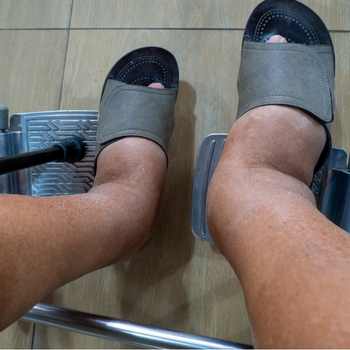Swelling Q & A
Where does swelling caused by an allergic reaction appear?
Swelling may appear as hives that can show up anywhere on your body and range in size from very small to large swaths of skin. Angioedema is another type of swelling that occurs under the skin and is what usually causes the inflammation around your eyes and lips. Angioedema can also affect your hands, feet, and genitals.
Swelling can occur at the site of contact with an allergen, such as with a bee sting or makeup application.
What allergies can cause Bump?

A reaction to any number of items can cause inflammation that ranges from mild to severe. You might swell in reaction to:
- Insect bites and stings
- Medications
- Food allergies
- Pet dander
- Pollen
- Latex
- Lotions, makeup, and other topical products
You can get an idea of what’s causing your allergic reaction and inflammation by where it’s occurring on your body.
How is swelling diagnosed as an allergic reaction?
The doctors at The Allergy Clinic do a thorough physical exam and medical history to help them reach their diagnosis. They may also ask if you have recently made changes to your diet, taken new medications, or come into contact with new products, such as lotions or laundry detergent.
In some cases, we find that patients are suffering from hereditary angioedema (HAE), which is a rare genetic condition. With HAE, patients will experience painfull swelling in their face, feet, hands, or genitals. In extreme circumstances, inflammation can move to the lungs or intestinal walls. On occasion, symptoms can move around the body to different parts in the same episode.
Sometimes, the cause of your bump is relatively easy to determine. For example, if you’re stung by a wasp and begin to experience swelling, the sting is the likely culprit.
How is allergic inflammation treated?
The best way to avoid swelling as an allergic reaction is to avoid the cause. Sometimes, however, that’s not possible, and the doctors at The Allergy Clinic prescribe antihistamines and steroids.
In severe cases, where swelling threatens your breathing and interferes with your daily activity, you may need an injection of epinephrine or a steroid. For hives that go on longer than 6 weeks in spite of treatment with antihistamines, an injection called Xolair is very effective.
At home, you can care for mild bump by using only lukewarm water and gentle soap to wash the area. Cool compresses can ease the bump, and light, loose-fitting clothes can ease your discomfort until the bump subsides.
If you’re experiencing swelling due to a suspected allergic reaction, call The Allergy Clinic immediately or book an appointment online.
